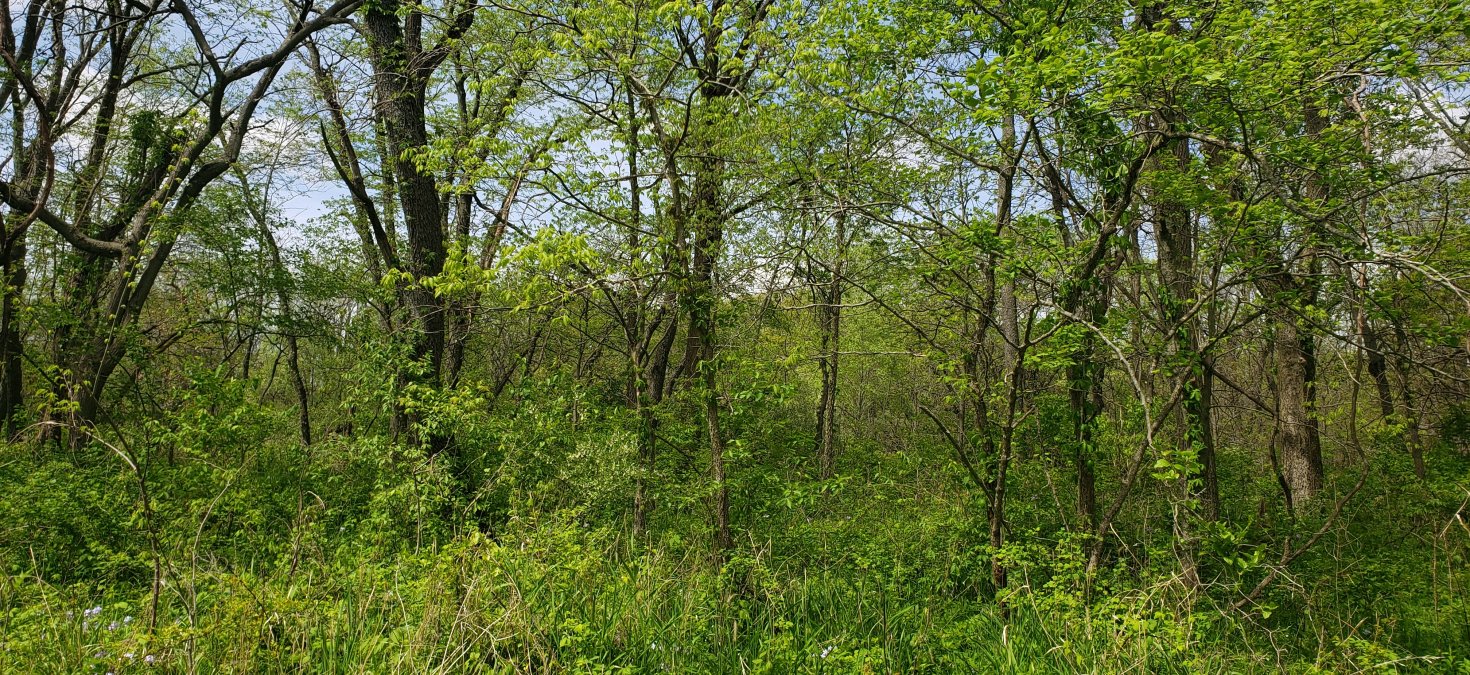Shinrin-Yoku, Forest Bathing

By Peter Davis, UIUC Junior in Mechanical Engineering
The Japanese expression shinrin-yoku literally translates to ‘forest bathing.’ It invites us to take a break from our busy lives and connect with nature. This simple act has gradually gained popularity in recent years, owing largely to its proven health benefits. Now more than ever, when people spend most of their time working in front of a screen, a healthy dose of nature is just what we need. In truth, everyone can both enjoy and benefit from forest bathing!
The term shinrin-yoku arose in the 1980’s, but the concept itself has ancient roots in Japan. Trees have always held a special place in Japanese history, as forests populate two thirds of its land. Both major religions of Japan, Shinto and Buddhism, revere forests for being a realm of the divine. In popular Japanese folklore, spirits known as kodama are thought to inhabit trees. There is a deep-rooted idea in Japanese culture that nature and mankind are intimately connected - physically, emotionally, and spiritually. Shinrin-yoku is about fully realizing this connection.
Everyone is familiar with outdoor activities like going for a hike or sunbathing, but forest bathing is much more simple. While the goal of a hike may be to reach a destination or to get exercise, the goal of forest bathing is simply be aware of the beauty of nature. It describes an experience so fundamental, it is too deep for words, a concept known as yugen in Japanese aesthetics. Though at first it may seem abstract, you can forest bathe by following a few simple steps.
The first step is to find a forest. Luckily, there are many beautiful locations in the University of Illinois Arboretum, including the tranquil gardens at Japan House. Still, any park or natural area should be suitable.

Before you begin, it is important to have the firm intention to forest bathe. Due to the simple nature of the activity, we frequently must avoid the temptation to feel overly productive with our time. Instead, you may bring forth the intention to take your mind off work or to simply be outside. Oftentimes, it can be helpful to imagine yourself crossing a physical threshold to begin forest bathing. For example, you may place a stick on the path in front of you and say ‘as soon as I cross this stick, I will be forest bathing’.
To begin, it is best to sit in one place for 5-10 minutes. In this time, you can develop an awareness of your surrounds to prepare you for a gentle walk in the woods. The most important aspect is to be attentive to your senses and immerse yourself in the moment. You may focus on the smells of blooming flowers, the feeling on a cool breeze on your skin, the sounds of songbirds, perhaps even the taste of the rich forest air. By being fully aware of each of our senses, we step outside of our own personal world and fully enter into nature’s restorative atmosphere.
Once you are ready, you may begin to walk leisurely amidst the forest, slower than a normal hiking pace. Using your heightened awareness, you may to look for ‘invitations’ from nature. Perhaps a certain flower is inviting you to smell it, or a bridge is inviting you to cross it. You may continue to follow these ‘invitations’ as long as you please. Gradually, you will observe the natural rhythm of life in the forest, and you may see yourself as part of it.
To complete your forest bathing, it is important to again sit in one place for a short time. During this time, continue to observe nature around you, but think about how your perspective has changed since you first entered. Consider how you are now more attentive and aware of the happenings around you. When you are ready, you may end your forest bathing session, bringing with you the mental gifts the forest gave you.
Amazingly, forest bathing gifts us with a plethora of health benefits, a fact which has been verified in numerous medical studies. Forest bathing will help lower stress, reduce blood pressure, and improve your mood. Studies have also found that it increases counts of NK cells in the body, improving the immune system and preventing cancer. Still, studies cannot capture one of the most powerful benefits: the increased sense of connection we begin to feel with the natural world.
This week, I invite you to experience this connection firsthand through shinrin-yoku. Perhaps you can use it to get a fresh start to the day, or as a much-needed break. I’m sure you will find it will bring countless gifts to your day. Truly, it is an experience too deep for words.
Peter viewing the trees at Morton Arboretum!